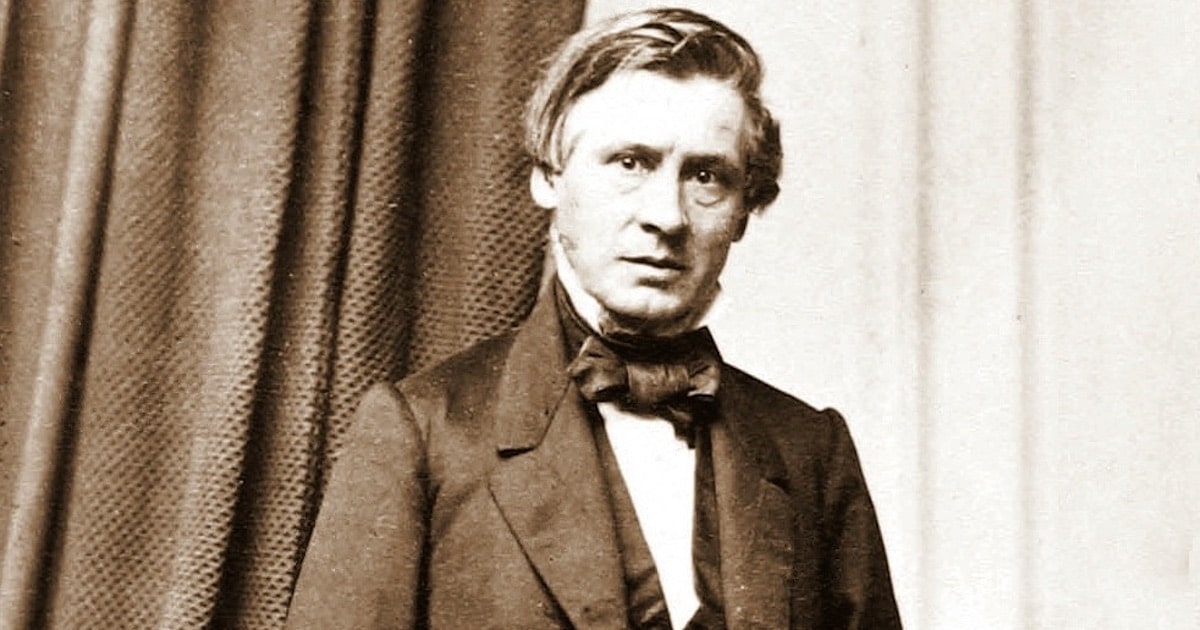 Evolution
Evolution
Why Darwin Eclipsed Wallace: Darwin Comes to America

I have been considering the question of why Charles Darwin came to overshadow the co-discoverer of the theory of natural selection, Alfred Russel Wallace, who later embraced an idea of what we would call intelligent design. See my post yesterday, “Why Darwin Eclipsed Wallace: Darwin and the English Class System.” A less class-bound kind of protectiveness was shown to Darwin in the United States by Professor Asa Gray of Harvard University. Gray was perpetually vigilant in defending Darwin from the criticisms of someone with whom Darwin had already crossed swords some two decades previously, the Swiss-American biologist, Louis Agassiz. Agassiz wielded considerable influence in North American. Americans had welcomed the brilliant Swiss to their shores upon his appointment to a chair at Harvard and looked to him for guidance in matters scientific. Agassiz had warned his American audiences and readers against the acceptance of what was known, after the work of Jean-Baptiste Lamarck and Robert Chambers, as the “developmental theory.” For this, thought Agassiz, constituted a mischievous and unscientific conjecture. Gray, on the other hand, did his best to make sure that Darwin had a fair hearing and adequate defense against Agassiz’s barbs.1
Wounding to Darwin
Gray must have known full well that Agassiz’s criticisms would have been particularly wounding to Darwin since he had conspicuously lost out to Agassiz in the duo’s first intellectual skirmish over a somewhat recondite issue concerning whether a Scottish loch was of marine or fresh water provenance.2 Although that disagreement can only count as a minuscule historical footnote today, it loomed large for the chronically self-doubting Darwin. It still rankled with him more than two decades later.
A quarter of a century after what Darwin later termed his blunder, his erstwhile opponent, Agassiz, seemed still to be securely in the driving seat in the United States, holding firmly to the decidedly pre-Darwinian position that species and the larger units of intelligence were indicative of a divine intelligence.3 His essentially Platonic view of the world (Agassiz had been taught by the renowned French naturalist Georges Cuvier) accorded the invisible order a unique place in accounting for the purposiveness of the sentient world. His was a resolutely vitalist and Christian cosmogony.
A Charm Offensive
Gray, seeing that Agassiz was a major hurdle to the acceptance of Darwin’s ideas in America, went on something of a charm offensive, going out of his way to defend Darwin from charges of atheism and “rank materialism” and carefully framing his tactical defence in the kind of language he knew Agassiz himself was accustomed to use. In Agassiz’s own copy of Darwin’s Origin of Species, he had written in a margin: “What is the great difference between supposing that God makes variable species or that he makes laws by which species vary?” Gray batted this formulation back at Agassiz as a means of defending Darwin when he argued that a conception of God as the first cause behind adaptation and variation was no less theistic than was to suppose that that a supreme power had created an immutable world in an original spurt of creation.4
An Immanent Force in Nature
According to Gray’s statements — which were more than a little economical with the truth as Darwin would have been minded to frame it — God could be postulated as an immanent force in Nature. That the divine could be understood as an indwelling creative force clearly narrowed the distance between the divine and mankind since He was now thought to be omnipresent — a tutelary deity or, in modern parlance, a cosmic “micromanager” superintending the adaptive contrivances of Nature. Such a view of evolution hardly corresponded with the kind of serendipitous natural selection announced by Darwin. Gray, however, was writing as an advocate with a willingness to go out on a rather fragile limb to defend Darwin in a way he knew Darwin could not in good conscience have endorsed. For Gray the ends clearly justified the means in the course of a protective campaign for Darwin whose purpose was to mollify Agassiz and so defend Darwin in what had effectively become an unpaid advocate/client relationship with his British colleague.
Tomorrow, “Why Darwin Eclipsed Wallace: The Role of Propaganda.”
Notes
- A. Hunter Dupree, Asa Gray: American Botanist, Friend of Darwin (Baltimore and London: Johns Hopkins UP, 1988; first edition 1959), especially pp. 269-271.
- The geological contention concerning some disputed physical features in the Glen Roy area of the Highlands of Scotland (about twenty miles from Loch Ness), an area noted for the geological phenomenon of its three “roads.” It is now known that the so-called parallel “roads” on a hillside in Glen Roy are in reality loch terraces that formed along the shorelines of an ancient ice-dammed loch: the ice had repeatedly melted and refrozen over vast amounts of time with the water levels coming to rest on slightly different set points each time. In 1838 Darwin chanced his arm by seeking to explain these roads as having resulted from raised, marine beaches, but Louis Agassiz and Scots geologists showed that this must have been an ancient freshwater lake once dammed up by ice (Agassiz had had ample experience of glaciers in the country of his birth).
- See Edward Lurie, Louis Agassiz: A Life in Science (Baltimore: Johns Hopkins UP, 1988; first edition 1960), p. 287.
- Lurie, Louis Agassiz, p. 298.
